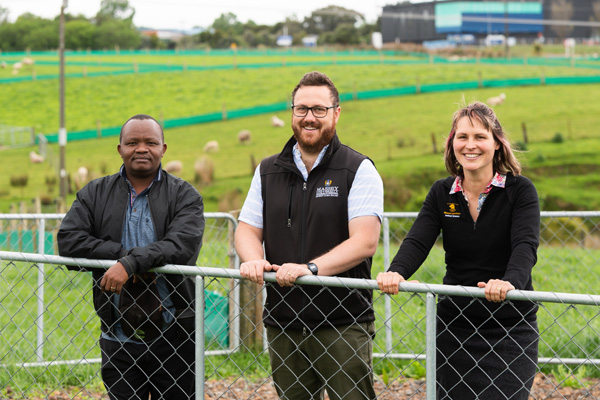Battling Brushweeds
An effective pest weed control programme takes into account the species present.

The Brushweed family can wreak havoc on productive farmland and it’s vital for farmers to have a tailored programme in place to control or eradicate these invasive weeds.
The most commonly known members of the Brushweed family are gorse and broom, but it includes other pesky plant pests such as heather, blackberry, bracken, manuka and kanuka.
Nufarm National Product Manager, Matt Strahan, explains that an effective control programme takes into account the species present, whether the plants are dense or scattered, method of application, time of year and which product is best suited for the situation.
“On marginal or even rolling country, these Brushweeds can invade productive land and, if left unattended, impact on production. In some worst-case scenarios people have areas they can’t farm, resulting in a reduction in stocking rate or having to buy in supplementary feed.”
There is also a lesser-known environmental impact from some species, like gorse and broom, which are nitrogen-fixing legumes. Strahan says research has shown gorse can leach 40-60 kilograms of nitrogen per hectare per year – more than a well-managed dairy farm.
Best practice for farmers battling Brushweeds is to first understand what you’re dealing with by identifying what plants are present.
Strahan says for those who already have a good management programme in place, the key message is to keep going.
“For those who are new to it, know what you’re dealing with and speak to people in your area with experience, like retailers or aerial applicators.”
The second question to ask is, is it dense or scattered? This will help determine the most suitable application method, selective or non-selective.
For dense areas, aerial application, often using a helicopter, is usually most cost effective. For scattered plants where a farmer may still wish to graze surrounding pasture, a gun spraying method might be preferable. This could be spraying on the back of a tractor or ute, by towing a line around and targeting individual bushes.
Finally, product choice is an important piece of the puzzle, and keep the end goal in mind. How soon you plan to put the land back into pasture for grazing, and ongoing management of seedlings, is important.
For big, extensive areas where you want total kill, Nufarm’s Associate® product is cost effective, but there are restrictions on how soon you can go back into pasture (up to 12 months). The WeedMaster® Dry product is broad spectrum and also cost effective, while giving more flexibility on going back into pasture (four to five days).
Conquest® offers good control of a wide range of Brushweed and also a range of mature pasture-based weeds. It is a good option for scattered gorse and overspray won’t impact large swathes of grass that could be utilised for grazing.
Finally, Scrubcutter® tackles a narrower range of Brushweed, but is softer on some native species and gives a grazing option, too.
Additionally, Pulse® Penetrant is a well-recognised brand of penetrant, that is essential to use in conjunction with your herbicide of choice for the majority of Brushweed. “Certainly, for gorse and broom, it’s a must. It helps the herbicide to spread over and penetrate the plant.”
Strahan cautions to beware of cheaper, unregistered, off-label penetrants. “It’s a significant investment in the herbicide and using one of these cheaper products can result in poor control or even spray failure.”
Coverage is key, so don’t skimp on water rates and, for aerial applications, ensure double overlap spraying, to target plants from both directions. For the best results, you want to spray when plants are not flowering or dormant.
®Associate, Conquest, Scrubcutter & WeedMaster are all registered trademarks of Nufarm Limited. ®Pulse is registered trademark of Nufarm Technologies USA.




